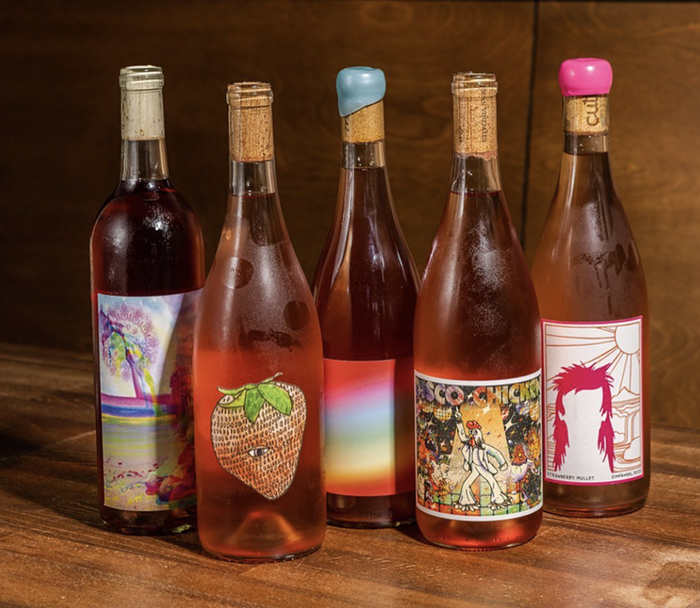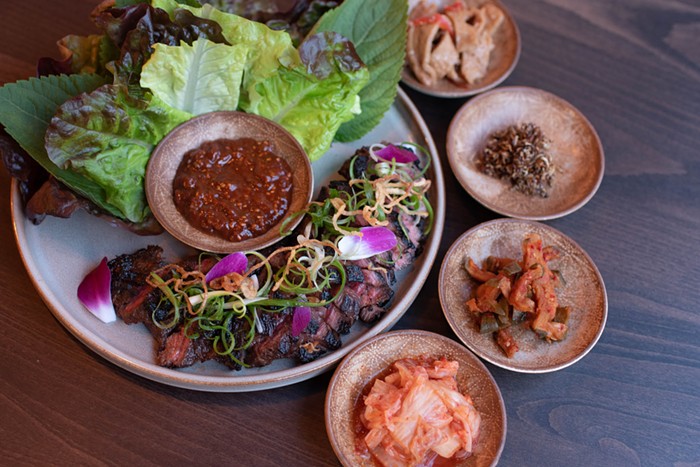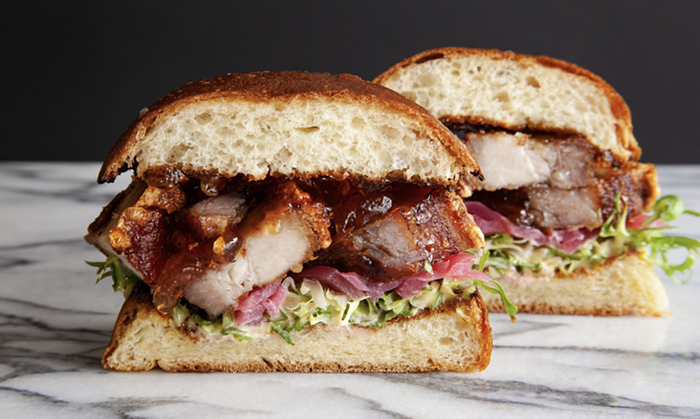
This week, I reviewed Sushi Kashiba, chef Shiro Kashiba's new restaurant in Pike Place Market. Over the course of his over fifty-year career, Kashiba pioneered and popularized sushi made from local seafood such as geoduck, albacore tuna, and salmon. In the late 1960s and 70s, Kashiba was also among the first Seattle chefs to use commonly discarded salmon parts such as skin and roe in his dishes.
Kashiba convinced fish purveyors to preserve the salmon skin and made salmon-skin rolls from them. He couldn't stand to see buckets of roe, which were either thrown away or used as bait, go to waste, so he befriended local fishermen on the Seattle waterfront and convinced them to give him their scraps. Now the briny, squishy, coral-colored eggs, known as ikura, are prized ingredients. He has long been a strong, albeit soft-spoken, advocate for stewardship and the use of seasonal, sustainable ingredients.
Kashiba's influence on Seattle and, by extension, Pacific Northwest cuisine can't be overstated. Recently there's been a lot of thoughtful discussion about how we define our regional cuisine, and specifically the inspiration local chefs have drawn from Asian culinary traditions. But despite the fact that, as Seattle Met's Kathryn Robinson writes, "virtually all of these chefs agree that Japanese food’s austerity and precision sustain the biggest Asian influence over Seattle fine dining," Kashiba's name is conspicuously absent from these discussions.
Regarding the Pacific Northwest's reverence for Japanese ingredients, Robinson goes so far as to say that we should "thank Tom Douglas, who circa 1984 put black cod kasuzuke with seaweed salad" on his menu, as though Douglas (who grew up in Delaware) was born with an inherent appreciation of Japanese food. If you take just a moment to look past Douglas and the 1980s, you'll find hundreds of Japanese chefs and cooks like Shiro Kashiba who, through decades of work in the kitchens of International District restaurants such as Maneki, Koraku, Tanaka, and Kashiba's first venture, Nikko, introduced their country's cuisine to American diners.
I was thinking about all of this the other night as I sat at the bar at Capitol Hill's beautiful Bar Melusine watching the lights reflect off the restaurant's many shiny gold fixtures. Renee Erickson calls Melusine her "love letter to the flavors of the French Atlantic." There's an undeniable French influence throughout the menu, from the section headings (which are all written in French) to the classic Normandy dishes of buckwheat crêpes and pré-salé lamb.
But my favorite dish of chef Jay Guerrero's was a bowl of fried fish skins dotted with ikura, shaved radish, and crème fraîche. The skins were crispy and substantial, but also ethereal and airy. ("We use salmon skin, but halibut skin fries really well too. Black cod not as much," Guerrero told me.) They were nice and salty—inherently so, not in the heavy, burdensome way things taste when they've been doused with salt—and perfectly complimented by the salmon eggs, whose crunchy exteriors soon gave way to their oozy, gelatinous insides. If they didn't cost eight dollars a serving, those skins, which reminded me of chicharrones and the bags of deep-fried pork rinds I used to eat while watching tv as a kid with my dad, might be my new favorite drinking snack.
As I happily crunched my way through the salmon skins, making sure to get every last bit of tangy creme fraiche, I realized just how far and wide Shiro Kashiba's influence goes. Two ingredients that, 40 years ago, he had to save from being thrown into the trash, are now the centerpieces of a dish that makes diners in an upscale French restaurant lick their bowls clean.


















